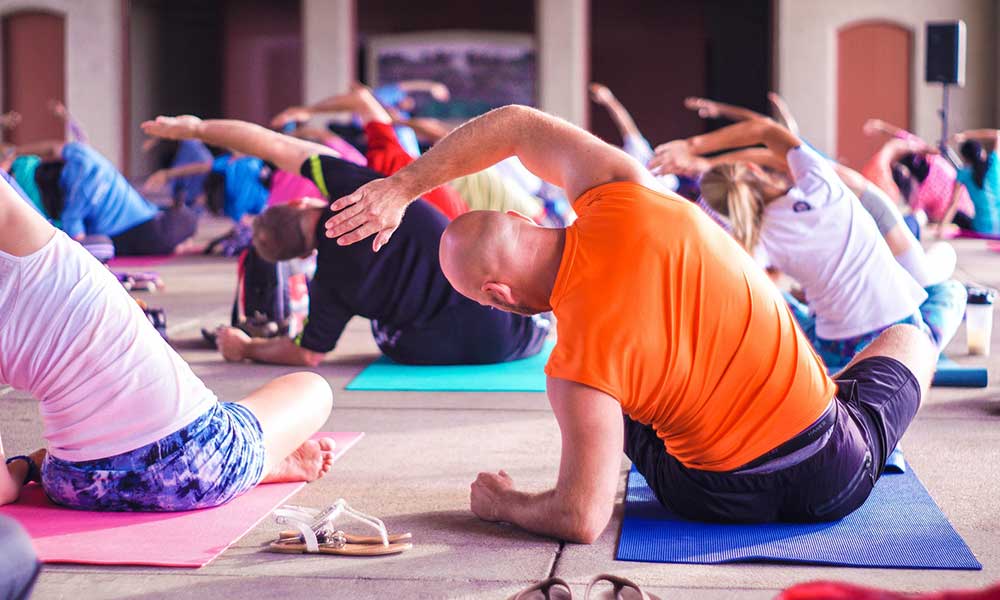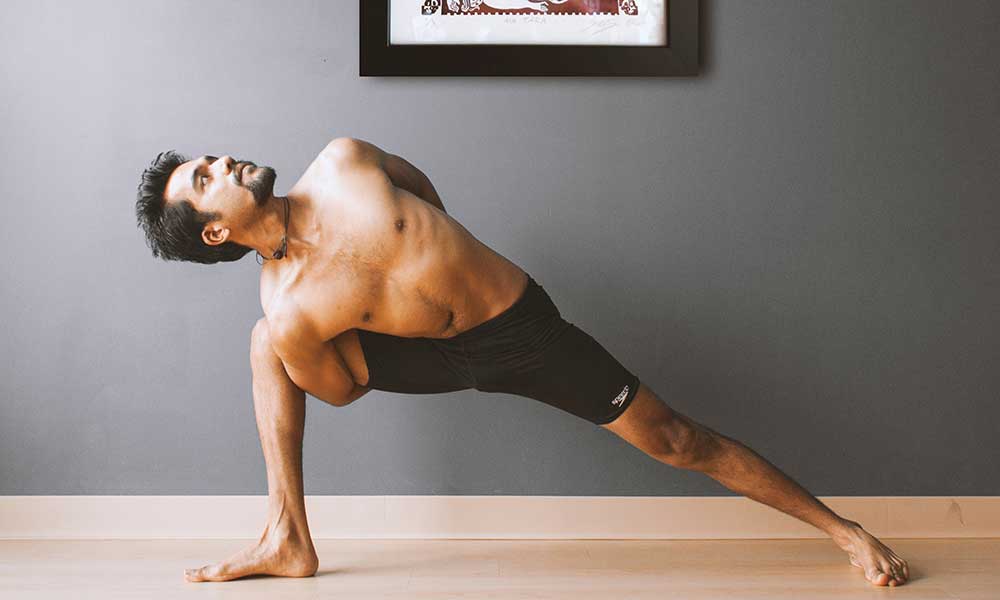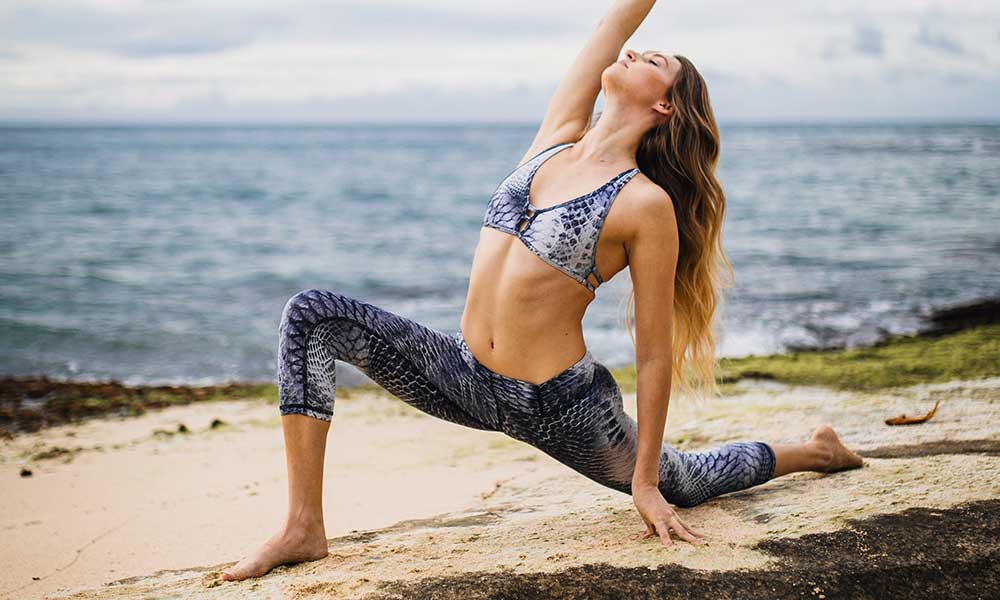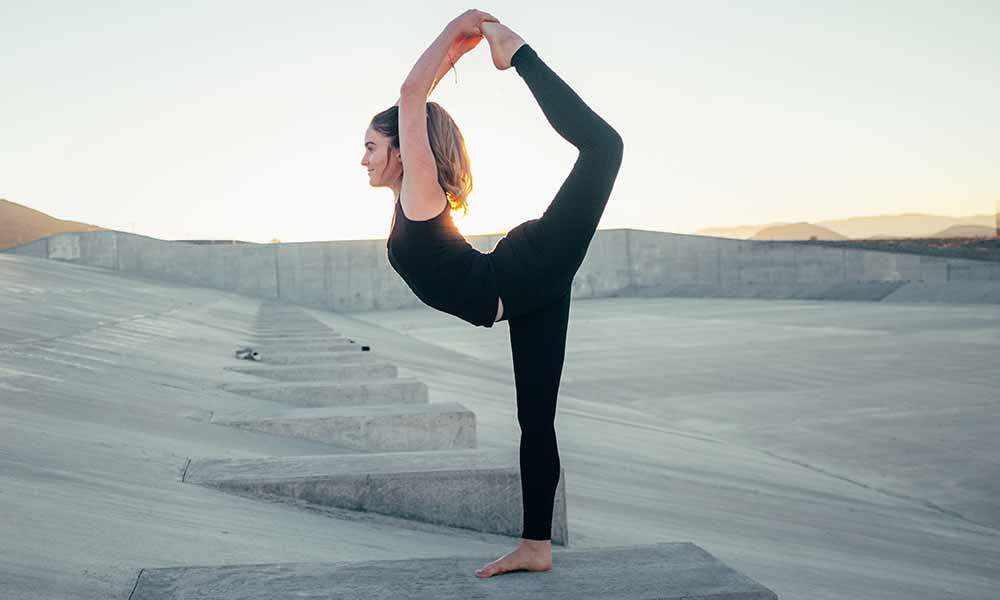Hatha yoga is a classical style of yoga that has been around since the 15th century.
This practice is one of the oldest styles of yoga to exist and has since been the inspiration for many new-age adaptations of yoga.
Ancient Hatha consists of asanas (yoga postures) and breathing exercises focusing on the body, mind, and spirit.
While the branch itself has been the same since day one, the general public’s understanding of it over the years has been molded and shifted.
In this article, we will discuss the basics of Hatha yoga including its history, health benefits, and what to expect from your first Hatha yoga class.
What is Hatha yoga?
Hatha yoga has been around for thousands of years, in which time, various definitions of the practice have been formed.
This means that taking a Hatha yoga class in New York might be a totally different experience from taking a Hatha yoga class in India.
Western cultures have adapted to believe that the purpose of Hatha is to balance the body and mind. According to this understanding of the term, “Ha” translates to sun and “tha” means moon.
Practicing Hatha yoga merges these two energies together. In Sanskrit, Hatha means “force” or “energy.”
Traditionally, this would mean that this practice translates to “the yoga of force.”
The History of Hatha Yoga
The word Hatha is Sankskrit for “force.”
The breathing techniques used in Hatha yoga have been around since the 1st century, according to Buddhist and Hindu texts.
Although this style of yoga began so long ago, it took another 1,000 years before asanas and physical poses were added to the mix as an avenue to increase vital energy.
By the 15th century, classical Hatha yoga was created to include asanas, pranayama (breathing exercises), mudras (hand gestures) and meditation to enhance spiritual development.
When Hatha yoga was first brought to America in 1893 by Swami Vivekananda, it was intended to be a spiritual practice.
It wasn’t until the 1920s that the yoga style was incorporated with other well-known physical exercises of the time to fabricate a flowing style of yoga that focused more on the physical body than on the spiritual body.
In the 1950s, Hatha yoga was accessible to millions of Americans through Richard Hittleman’s popular TV show “Yoga for Health.”
The practice became even more mainstream when Maharishi Mahesh Yogi, the spiritual advisor to The Beatles, introduced a combination of transcendental meditation and yoga to Americans just a few years later.
In modern day, Hatha yoga is a well-favored go-to as a physical and spiritual practice that nurtures mind-body health.
Health benefits of Hatha yoga
Yogis have been singing the praises of yoga and its health benefits from mountain tops since the beginning of time, and its popularity is only increasing.
Anecdotally, yoga has been known to create general feelings of calm and well-being. In modern day, there is now scientific research to back up these claims.
According to dozens of peer-reviewed studies by The National Institutes of Health’s National Center for Complementary and Integrative Health, yoga can have the following health benefits:
- Decreases anxiety and depression: The combination of physical postures and meditation done in yoga can help to relieve symptoms of anxiety and depression.
- Alleviates symptoms of arthritis and fibromyalgia.
- Relieves back pain: The practice of holding poses and stretching has been found to be an effective, non-drug alternative to treating lower back-pain.
- Improves balance.
- Enhances motional health: 10 out of 14 studies reviewed by the NCCIH showed that yoga enhances mental health and increases resilience.
- Relieves symptoms of menopause: Hatha yoga can alleviate both physical and psychological symptoms of menopause.
- Increases mindfulness: Hatha yoga can improve one’s ability to be more mindful while completing daily activities, meal choices and work ethic.
- Relieves neck pain: The stretching, postures and meditation done in Hatha yoga can reduce neck pain while also increasing range of motion in the neck.
- Improves sleep: Yoga can help us to sleep longer and deeper.
- Improves stress management.
What to expect in a Hatha yoga class
Today, there are so many different yoga styles to choose from.
However, if you are taking a class that is simply called “yoga” it is more than likely a Hatha style class.
In comparison to other forms of yoga, Hatha is considered a gentle yoga consisting on breathing exercises and static poses. Beginner yogis are encouraged to take a Hatha yoga class since it is slower paced.
However, aspects of the practice can still be physically and mentally challenging.
Every yoga instructor is different, but you should expect a Hatha yoga class to last anywhere between 45 and 90 minutes.
Usually, the instructor will begin the class with a gentle warm-up and then slowly advance to more physical postures, closing the class with a short meditation.
Here are some of the key components at play in a Hatha yoga class:
- Breathing: Hatha yoga classes will almost always begin with a pranayama (breathing exercise) to get you in touch with your breathing. Throughout the class, you will be gently reminded to focus your attention on the breath while flowing through postures.
- Poses: Hatha yoga consists of a large variety of physical postures that range from laying flat on the ground to more challenging balance poses. The movements are geared to improve balance, flexibility and strength. One of the perks of practicing with a yoga instructor is that you can always ask for a modification if a particular position is too challenging. Many times, these modifications will automatically be shared with the class.
- Meditation: Hatha yoga usually includes a short meditation at the end of each class. Depending on the yoga teacher, you may be asked to lie down on your back or sit quietly for a quiet moment of reflection or a guided meditation with Tibetan singing bowls. Once the meditation period comes to an end, yogi participants are usually asked to hold their hands together in a prayer pose, bowing, and saying Namaste to their fellow classmates.
Frequently Asked Questions (FAQs)
Here are some of the most common questions that people have about Hatha yoga.
What is the difference between Vinyasa and Hatha Yoga?
Vinyasa and Hatha consist of many of the same poses, the main difference is the pace of the classes.
Vinyasa is done at a much faster pace than Hatha, which is known as “gentle yoga.”
How is Hatha Yoga different from other yoga?
Hatha is believed to be the most ancient form of yoga to exist.
This means that all branches of yoga stemmed from Hatha practices.
Traditional Hatha yoga is different from other styles in that it is said to be the original form.
What does Hatha Yoga include?
Hatha yoga is a practice that includes breathing techniques, physical postures, and meditation.
Can I lose weight with Hatha Yoga?
While Hatha yoga does consist of physical postures, it is generally known to be a slower-paced class than other forms of yoga.
If weight loss is your goal, you might want to try a faster-paced class like power yoga or Vinyasa.







